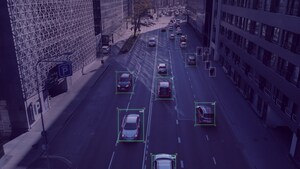StradVision CEO discusses impact of ADAS, Autonomous Vehicle advancements
SEOUL, South Korea, Oct. 18, 2021 /PRNewswire/ -- With news arriving daily about Autonomous Vehicles and Advanced Driver Assistance Systems, it can be difficult for the public to understand what's going on and how close to reality Autonomous Vehicles are.
Junhwan Kim is CEO at StradVision — a leader of AI-based automotive vision processing technology — and he provides an insider's view into the current state of ADAS and AVs.
Q: Who will benefit most from ADAS technology and Autonomous Vehicles?
A: As the number of vehicles worldwide expands, traffic accidents and their fatality rate are increasing. According to the WHO, more than 1.3 million people worldwide die in road accidents every year. Drivers over age 65 are 573% more likely than the average driver to die in an accident. Autonomous driving technology can significantly reduce the overall number of traffic accidents, and improve the safety of elderly drivers in an aging society.
Q: What are the latest vehicle safety innovations?
A: Regarding camera sensors, our StradVision team is increasing field of view and image resolution. Recent achievements increase highway driving safety with high-resolution cameras of 4 to 8 million pixels, that can recognize objects at a distance of up to 200 meters or more. A technology that integrates sensors to detect 360-degree directions around the vehicle is also being developed, to eliminate blind spots around the vehicle. Surround view monitoring helps implement automatic parking and parking assistance features.
Q: What role will Augmented Reality play?
A: AR technology projects ADAS warnings and navigation information onto the vehicle instrument panel or Head-Up Display to enhance situational awareness, prevent accidents and provide a safer driving environment.
Q: What role will Sensor Fusion play?
A: Sensor Fusion technology combines the versatility of a camera — which identifies information such as shape and color — with Lidar that measures distance within a few millimeters. At StradVision, we believe Sensor Fusion can dramatically improve the limitations of existing perception technology.
Q: Can governments play any role in bringing this technology to the masses?
A: Countries are devising automobile safety policies to reduce accidents and fatalities, and recommend that automakers reflect these policies in driving technology. In response to these changes in policy, OEMs are expanding the introduction of the Advanced Driver Assistance Systems (ADAS) for the safety of drivers and pedestrians. The global ADAS industry exceeded $20 billion in 2020, and may reach $49.3 billion by 2025.
Contact: Matt Myftiu, [email protected]
SOURCE StradVision

WANT YOUR COMPANY'S NEWS FEATURED ON PRNEWSWIRE.COM?
Newsrooms &
Influencers
Digital Media
Outlets
Journalists
Opted In






Share this article